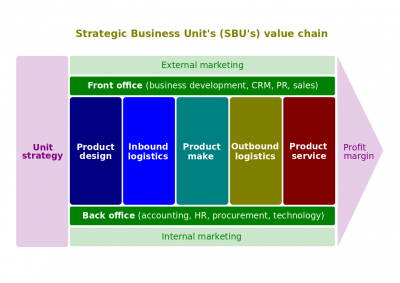Difference between revisions of "Marketing"
(→Core concepts) |
(→Core concepts) |
||
| Line 16: | Line 16: | ||
*# [[Market]], [[seller]] vs [[buyer]], choice | *# [[Market]], [[seller]] vs [[buyer]], choice | ||
*# [[Market offering]], offer mix, value proposition | *# [[Market offering]], offer mix, value proposition | ||
| − | *# Market | + | *# [[Market exchangeable]]s, consumables vs possessions vs services |
| − | *# | + | *# [[Service]]s, accesses vs work vs experiences vs communications |
*# Competitive forces, rivals vs new-entrants vs buyers-power vs suppliers-power vs substitutes | *# Competitive forces, rivals vs new-entrants vs buyers-power vs suppliers-power vs substitutes | ||
* '''Impressions''' | * '''Impressions''' | ||
Revision as of 18:25, 6 May 2023
Marketing is a set of endeavors that an market actor undertakes to complete a market exchange.
Contents
Definitions
According to Marketing Management by Keller and Kotler (15th edition),
- Marketing. The activity, set of institutions, and processes for creating, communicating, delivering, and exchanging offerings that have value for customers, clients, partners, and society at large.
According to Juran's Quality Handbook by Defeo (7th edition),
- Marketing. The process of promotion, including activities to provide product labeling for warnings, dangers, antidotes; training of the field force in the contract provisions; supplying of safety information to distributors and dealers; setup of exhibits on safety procedures; conducting of tests after installation and training of users in safety; publication of a list of dos and don’ts relative to safety; establishment of a customer relations climate that minimizes animosity and claims.
According to Managerial Accounting by Braun, Tietz (5th edition),
- Marketing. Promotion and advertising of products or services.
According to the ASME EMBOK,
- Marketing. Strategies and activities that focus on assessing the needs and wants of potential customers and then meeting those needs.
Core concepts
- Market
- Market, seller vs buyer, choice
- Market offering, offer mix, value proposition
- Market exchangeables, consumables vs possessions vs services
- Services, accesses vs work vs experiences vs communications
- Competitive forces, rivals vs new-entrants vs buyers-power vs suppliers-power vs substitutes
- Impressions
- Market impressions, manufacturer vs seller impressions
- Branding, deliverable vs organization brands
- Communication mix, advertising vs publicity vs personal communications vs promotional campaigns
- Paid vs owned vs earned media
- Buyer
- Needs vs wants vs demands
- Seller
- Market segmentation, target segment
- Positioning, points of parity vs points of difference
- Seller-growth opportunities
- Marketing vs sales vs production vs product orientations
- Engagements
- Market exchange, delivery vs communication vs customer-support channels
- Market-engagement funnel, unaware-to-aware, aware-to-educated, educated-to-customer, customer-to-advocate conversions
